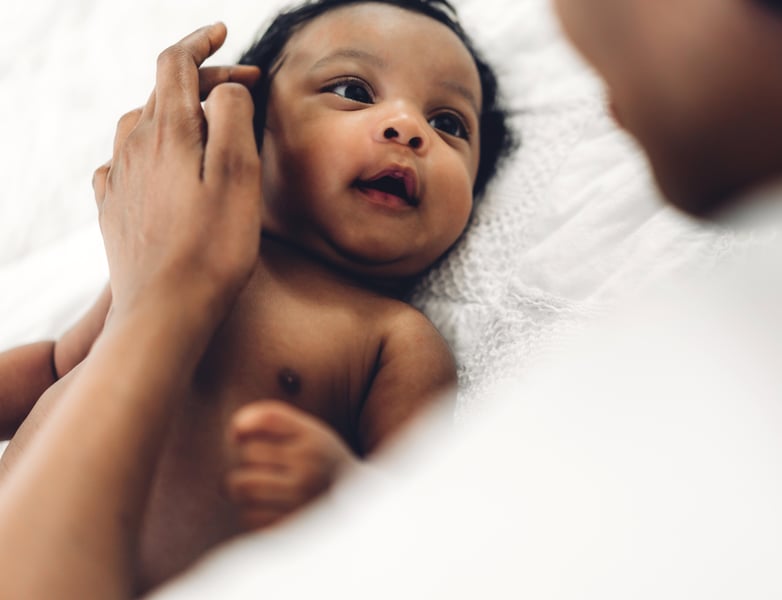Monday - Friday 8:30am to 7:00pm
Saturday - 8:30am to 4:00pm
Sunday - Closed
Get Healthy!

- Posted October 31, 2022
Cystic Fibrosis Screening Often Misses Black, Hispanic Babies
While early diagnosis of cystic fibrosis can prevent permanent lung damage, newborn screening often looks only for genetic mutations more common in white people than those found in people of color, a new study finds.
"Newborn screenings are meant to be a public health measure that is equal across populations, but in practice, we are actually creating disparities because children of color are going undiagnosed for cystic fibrosis until an older age,"said lead author Dr. Meghan McGarry, an associate professor of pediatrics at UC San Francisco Benioff Children's Hospitals. "That means they are treated later when symptoms occur, and their outcomes are often worse."
Genetic panels used in newborn screening programs vary by state. But most test for gene mutations more common in white people than in Black, Hispanic, Asian, American Indian and Alaska Native newborns.
For the study, researchers analyzed the genetic mutations of 46,729 people in the 2020 Cystic Fibrosis Foundation Patient Registry. They then calculated the rate of delayed diagnoses or false-negative tests by race and ethnicity and compared the data across states.
In most states, a newborn screen is declared positive when at least one disease-causing variant of the cystic fibrosis transmembrane conductance regulator (CFTR) gene is detected.
In known cystic fibrosis patients, the detection rate for at least one CFTR variant was 56% to 77% in Asian patients; 73% to 86% in Black patients; 84% to 91% in American Indian and Alaska Native patients; and 81% to 94% in Hispanic patients, compared to 95% to 97% in white patients.
When two CTFR variants instead of one were required for a test to be considered positive, the racial gap widened.
Researchers found states with greater racial and ethnic diversity had lower detection rates for each testing panel.
Detection rates were higher overall with testing that examined more variants, though this wasn't the case for all races/ethnicities, researchers said.
"In order for newborn screenings to be equitable, they must include CTFR variant panels that reflect the racial and ethnic diversity of the population,"McGarry said in a UCSF news release. "Three states -- Wisconsin, New York and California -- do this well and use full sequencing, as well as systematically monitor and review who is being missed, what variants they had, and whether they should be adding variants to the panels."
Cystic fibrosis is a progressive, genetic disease that affects the lungs, pancreas and other organs. In people with the disease, a gene mutation causes a protein that helps regulate mucus to malfunction. This can lead to clogged airways, trapped germs and infections such as bronchitis and pneumonia.
About 1,000 cases a year are detected. Early diagnosis can reduce severe symptoms and is associated with improved nutrition, better pulmonary outcomes and survival.
"The bias in newborn screening testing is coupled with clinician bias against diagnosis of cystic fibrosis in Black, Hispanic, Asian and American Indian/Native Alaskan babies that can have fatal consequences,"said senior study author Dr. Susanna McColley, a professor of pediatrics at Northwestern University Feinberg School of Medicine who treats patients at Ann & Robert H. Lurie Children's Hospital of Chicago. "We hope this work will lead to more equitable screening in all states."
Cystic fibrosis occurs in people of all ethnicities and races, with about 20% of cases seen in minority groups.
"Most white kids with cystic fibrosis nowadays are never hospitalized; for them, it's an outpatient disease and they will likely live a full life," McGarry said. "If you are not white, however, you are more likely to be the one in the hospital all the time with a severe disease."
By way of example, she pointed to one young patient of color who had a normal newborn screening. His cystic fibrosis wasn't diagnosed, McGarry said, until he was on a ventilator and intubated with multiple pneumonias and permanent lung damage.
Ideally, children should be diagnosed within their first month of life.
"As early as four weeks, you can already see permanent lung damage. Some even have symptoms in utero, though most undiagnosed babies start having respiratory symptoms around four to eight weeks,"McGarry said. "There is good research showing that if you can get diagnosed through newborn screening before having a lot of disease -- rather than being diagnosed with symptoms -- you have much better outcomes in the long term."
The findings were published Oct. 31 in the journal Pediatric Pulmonology.
More information
The National Heart, Lung and Blood Institute has more on cystic fibrosis.
SOURCE: University of California, San Francisco, news release, Oct. 21, 2022
